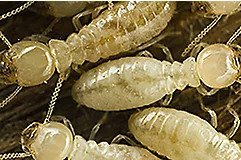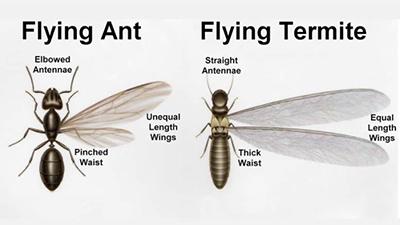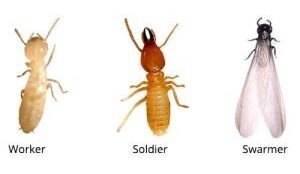
Subterranean Termites
Subterranean termites are the most destructive insect pests of wood in the United States. They cause more than $2 billion in damage each year, more property damage than that caused by fire and windstorm combined. In nature, subterranean termites are beneficial by breaking down many dead trees and other wood materials that would otherwise accumulate. The biomass of this breakdown process is recycled to the soil as humus.
Termites become a pests when they attack the wooden elements of human structures– homes, businesses, and warehouses. Their presence is not readily noticed because they hide their activity behind wall boards, siding, or wood trim.
Termite workers make up the largest number of individuals within a colony. Workers are wingless, white to creamy white, and 1/4 to 3/8 inch long. They do all of the work of the colony, i.e. feeding the other castes, grooming the queen, excavating the nest, and making tunnels. Their “work” consists of chewing and eating wood, causing the destruction that makes termites economically important.
within a colony. Workers are wingless, white to creamy white, and 1/4 to 3/8 inch long. They do all of the work of the colony, i.e. feeding the other castes, grooming the queen, excavating the nest, and making tunnels. Their “work” consists of chewing and eating wood, causing the destruction that makes termites economically important.

It is important to be able to distinguish between swarming termites and ants. They often swarm around the same time of year, but control measures for each differ greatly.

